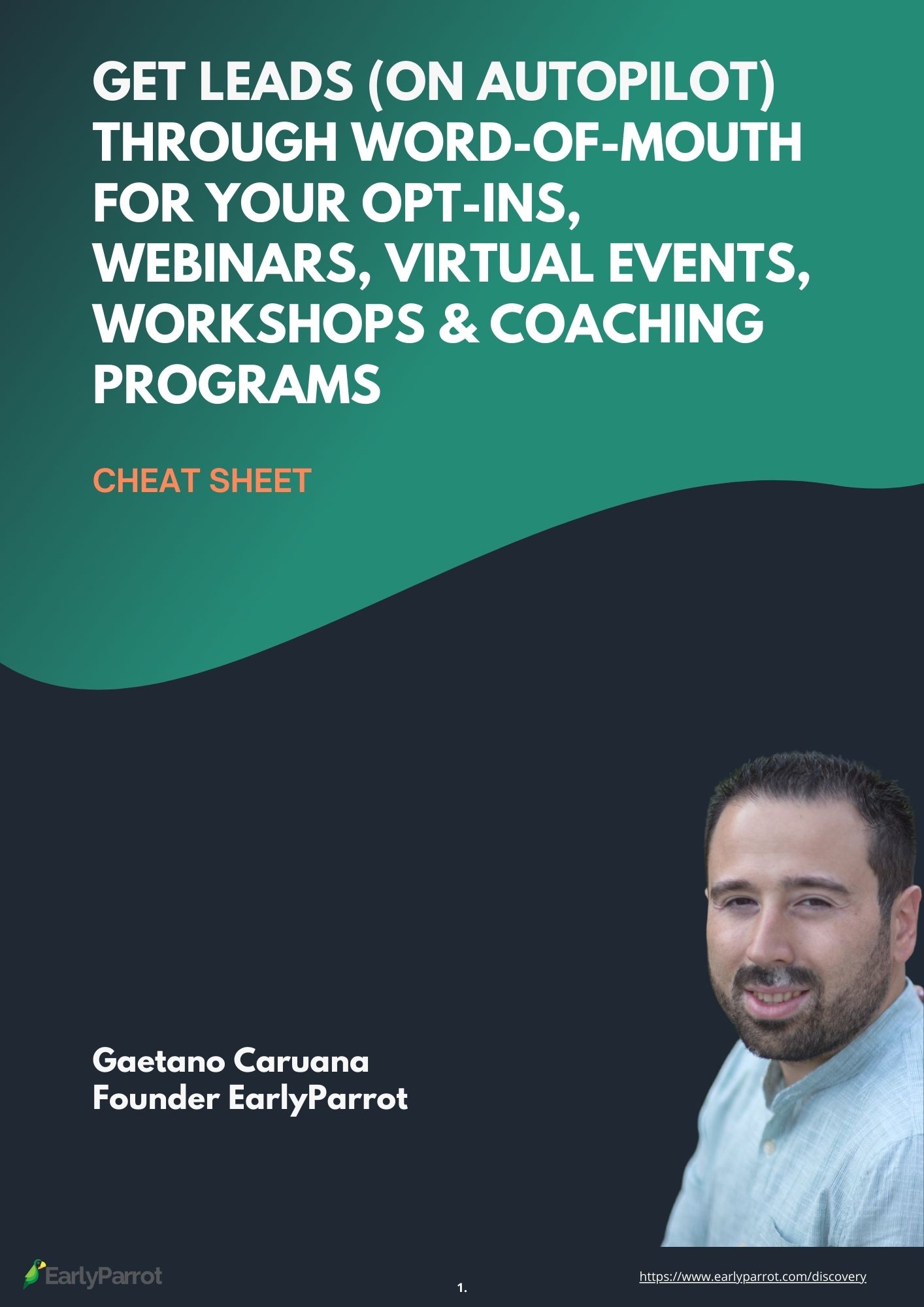One of the most common challenges that most SaaS face is customer retention. Unlike, acquiring and conversion, retention is topic which is given less importance. Whilst there is a lot of literature on how to acquire leads and how to convert them into customers, very little is said and done by SaaS to retain those hard earned customers. Such biased situation do no justice to retention as a topic. SaaS companies should constantly monitor retention rate as it indicates whether:
- solution provided is really solving the pain points of the customers
- customers being acquired are of good quality
- customers can afford to pay for the solution provided
- SaaS is properly marketing itself, clearly showing what it can do for its clients
Needless to say, having a very low retention rate is not healthy for any SaaS. It might mean that all the efforts done to implement lead generation strategies and customer conversion go down the drain as once customers convert are vanishing.
There are various strategies that SaaS companies can implement to help increase retention. In this section, we aim to cover a good number of these strategies.
Strategy #52: Offer annual pricing
Most SaaS require more than a month to be able to show the full potential of what they are capable of doing. At EarlyParrot we do referral marketing (explained later on in the referrals section). It is very hard for business to get the full potential of referrals in just 30 days. Hence we, bundle a number of good incentives, not just a discount, but also a list of services, such as free onboarding and integration and strategy calls to encourage our customers to jump on an annual plan.
By converting customers to an annual plan, you will have plenty of time to focus on providing long term value, rather than focusing on making sure customer renews their subscription the upcoming month. Selling monthly is very hard as most churn because of lack of understanding your SaaS and how valuable it is.
Strategy #53: Keep educating your customers
Education has to start at lead acquisition stage but should not stop at customer conversion stage. It has to be ongoing even after closing a monthly or annual deal.
By keeping your customers well informed about the industry you operate in, in particular how they can use your SaaS to achieve better results, you will be giving your customers more reasons to keep using your SaaS and to learn how to make better use of it.
You can educate your existing customers by sending a weekly newsletter with new case studies, new features of your SaaS and special tips on how to better use your SaaS.
Strategy #54: Creating Product Tours to Improve Retention
Fast-growing companies that are trying to reach product-market fit has 20% 8-week retention rate while the top SaaS companies have around 35%. A great part of this difference comes from the well-designed onboarding process during the first visit. [source: Article by Mixpanel; “What’s a good retention rate?”]
UserGuiding helps SaaS products show the real value they offer to the SaaS users with three main features:
- Users can reach product walkthroughs on-demand: You don’t know when a user needs help. Immediate pop up when a user visits a web page, is generally considered to be a bad thing. Instead, user onboarding tools should have an option to help users on-demand.
- Segmentation & custom attributes: When it comes to user onboarding, one size does not fit all. A user might have a different native language, might have a different traffic source, might be a different type of user on your website with different permissions. UserGuiding allows you to show the most beneficial guide for each different segment of users.
- Analytics: How could you know if you are improving something or not, when you do not have the numbers? For SaaS products, on-boarding guides’ completion rates give you a great insight to see the effect of the tool, or where you still have room for improvements.
Strategy #55: Collect reviews of satisfied customers, share the reviews with existing customers
One of the main objectives for SaaS is to collect more reviews. Reviews help SaaS to improve social proof and get the word out, share how satisfied the customers are with your product.
With Feedier, you can create a unique process to help you not only measure the satisfaction of your customers, but also build loyalty and social proof:
- Collect on-site feedback and post-order feedback automatically (through Zapier connection or Feedier API)
- Reward your customers for their feedback, thank them and build loyalty in the meantime by offering a voucher. All of that done through Feedier.
- Engage, collect reviews from the most satisfied customers after the feedback is given.
What is Feedier and how it can help your SaaS?
Feedier knows customers aren’t inherently excited about providing feedback, which is why Feedier makes sure you give customers a unique and enjoyable experience. Through aesthetically pleasing and gamified surveys, customers can give you feedback and have an incentive by being rewarded (vouchers, discounts, prizes, etc.) on any device.
All feedback will be stored in one dashboard. Here, you can monitor your KPIs with real-time insights, in-depth reports, and powerful analytics. Use those insights to build relationships with your most engaged customers and make valuable changes to your business that’ll keep them coming back for more.
Submitting feedback needs to be fun and rewarding for the customer. Or else, why in the world would they do it? Get the feedback you need for your business and build better relationships and brand loyalty in the process. Create gamified surveys using Feedier!
Strategy #56: Create retention flows for existing customers
Just like not all leads convert in the same way, not all customers retain your SaaS subscription in a similar manner. That is why you have to come up and design different retention flows for your users. Hardcoding retention flows into your SaaS is not ideal as your retention strategy should adapt and change to fit your business plan and customer needs. And ideally, you should be able to do this without using development resources. Hence why Raaft exists and here to save the day.
Building a retention flow in Raaft is simple. You can create one retention flow for all your customers, or you can create individual ones for each plan your customers are on. Raaft breaks down the retention flow into steps, so you can see how your customers will move through the process: Welcome, Motivators, Responses, Feedback, & Cancellation. You can also design your fully responsive retention flow to be the size, color, and style that fits your brand best. When you create a retention flow, you’ll see the power that Raaft has to both collect feedback, as well as retain customers who were thinking about leaving.
What is Raaft and how it can help your SaaS?
Raaft helps SaaS companies lower churn and collect valuable customer feedback. This can be done at the top of the funnel for trials that don’t convert, as well as for existing customers who are thinking about leaving. Raaft eliminates the manual processes involved with cancellations and exit feedback by allowing you to create a customized retention flow for your customers. This is a step by step process that asks them why they’re leaving and allows you to offer responses to these motivators in an effort might keep them around (discounts, trial extensions, pausing, changing plans, support, etc). If customers still decide to leave, Raaft handles that as well. Customers will provide written feedback on why they’re leaving and then are able to cancel on their own. All of their info is immediately populated in the Raaft dashboard enabling you to pull insights from your data, track trends over time, and identify the right improvements that your product needs to keep customers longer.
Raaft is an ideal solution for any SaaS company trying to reduce churn, collect feedback, and save time when dealing with cancellations. Without taking up valuable development time, Raaft retention flows can be customized to specific types of customers (trial, basic, premium, etc) so you can customize your language and offerings to be the most effective. When a customer enters your retention flow, Raaft knows who they are and exactly what they do. Your dashboard reveals why customers are leaving with qualitative & quantitative data, as well as what responses are being chosen to keep them around longer. You can use these insights to help prioritize your product roadmap and build a product that keeps customers around longer.
For SaaS companies who recognize the value in converting trials and retaining customers, Raaft provides the tools and insights to do so in a simple and customized way without using development resources.
Strategy #57: Set a different retention flow for trialing users
Raaft enables you to create a retention flow for trialing customers. When SaaS users sign in at your SaaS to cancel their trial, they are presented with a simple dialog that collects feedback from them. You can customize the questions and options to allow them to choose exactly why they are leaving, and even provide you custom text feedback for more insight. To increase conversions, you can offer discounts, trial extensions, phone calls, or other ways to entice them to convert. You’ll not only learn why trials aren’t converting, but you’ll be able to save some people who were on their way out.
Strategy #58: Real time retention data, feedback & insights
Your Raaft dashboard gets populated with real time data to show you valuable information about every SaaS customer who enters a retention flow. You’ll see: how many customers entered your flow, how many cancel, what are the most common motivators for leaving, which responses people are selecting to stay around and the custom feedback they leave on their way out. You’ll get a customer view with their full history of interactions, feedback, and their final outcome (Saved, Cancelled). Raaft also has a Feedback section that allows you to filter the custom feedback left from customers and identify commonalities and draw out insights. You’ll know exactly why customers have left and what you can do to improve your product for the future.

